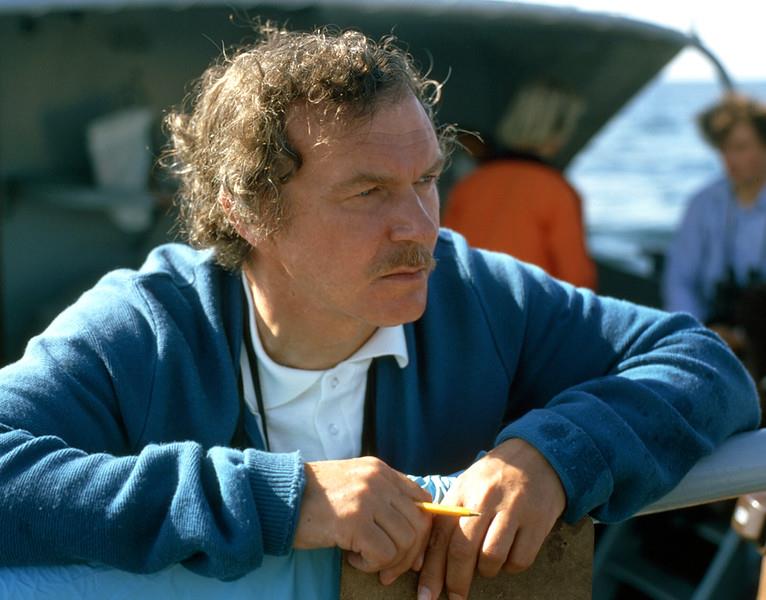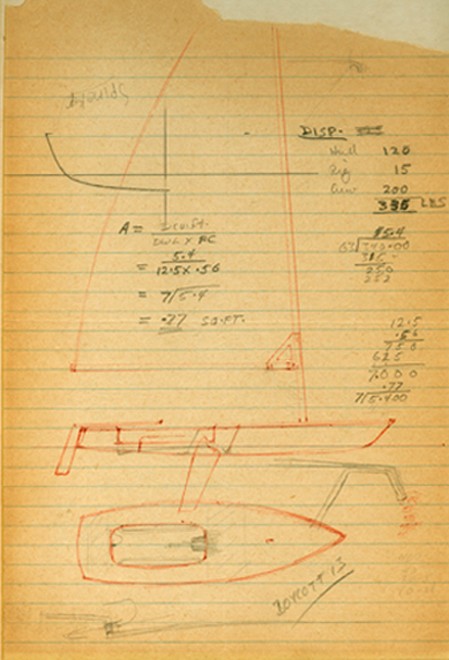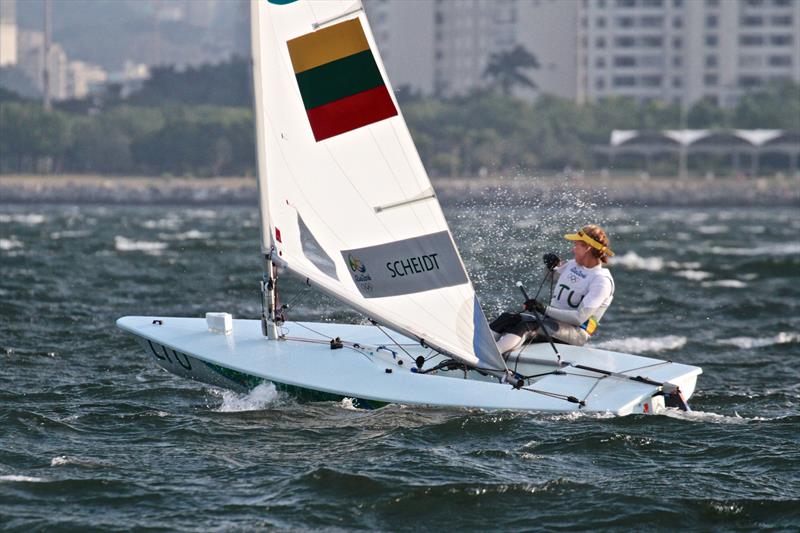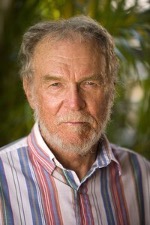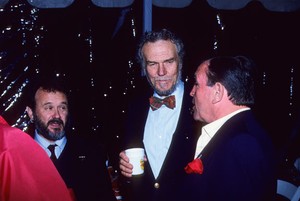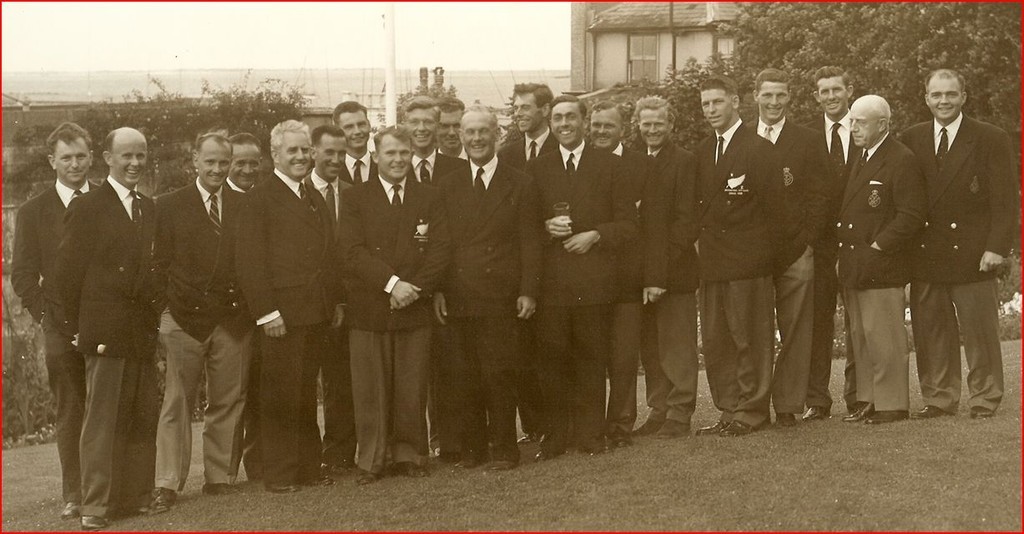Bruce Kirby, Designer of the Laser
Sailing legend Bruce Kirby passed away on July 18. He was 92 years of age. Kirby was known around the world as the designer of the Laser, which captured the imagination of would-be sailors all over the world because it was low-priced, fast and could be carried on a car’s rooftop. Tens of thousands of sailors got their introduction to sailing on the Laser and more than 220,000 of them were made over the years. But long before he created the Laser, he was a three-time Olympic sailor for Canada, before moving to the United States, where he lived most of his taler life in Rowayton, CT.
The following obit first appeared in “Sail-World USA.”
Bruce Kirby enjoyed a lifetime in the sport as a sailor at Olympic level, America's Cup and Admirals Cup levels, as well as being heavily involved in the International 14ft class at Team racing and Prince of Wales Cup (fleet racing) level. He represented Canada at three Olympic regattas.
Kirby began his working life as a newspaper journalist, which he combined with an interest in yacht design.
Journalist and Editor
He switched to being a sailing journalist, becoming Editor of One-Design and Offshore Yachtsman, now Sailing World. However it was the Laser designed as a doodle while talking on the phone, that enabled him to make the financial switch to become a full time, albeit self-taught, designer.
The Laser was one of the first of the single manufacturer one designs that are now prolific in the sport. It was launched in partnership with his compatriot Ian Bruce, who looked after the production side of what became one of the most popular one-design classes, of which more than 220,000 have been built.
Birth of the Laser
Now 50 years old, the class was launched at the New York Boat Show in January 1971 and sold 144 boats off the stand at that show. The Laser proved to be one of only three iconic designs in sailing history, which had a dramatic impact on the sport, the other two being the Windsurfer and Hobie Cat.
In an interview with Soundings Online, published in June 2019, he admitted to a long-standing love affair with the America's Cup, claiming he was "probably the only person left who remembers listening to the America's Cup on the radio before the war. My father and brother listened to it in 1934. By 1937, when Ranger beat Endeavor, I remember distinctly listening to it."
A Life of Sailing
Sailing was a constant presence in his life, and he was good at it, Kirby jumped from the International 14 into the Finn class to sail for Canada in the 1956 Melbourne Olympics, where he became friendly with Paul Elvstrom, the Dane who won three consecutive Olympic golds in that class. Kirby skipped the 1960 Rome Olympics when he and his wife, Margo had their two daughters, but he returned to the Finn class at the 1964 Tokyo Olympics, in Enoshima - venue for Tokyo2020.
The long story of the wee yacht that became the Laser began when a marketing offshoot of Canada's Hudson Bay Company asked Ian Bruce, a Montreal product developer at the time, to come up with proposals for a line of outdoor sporting equipment, Kirby wrote in Sail-World in March 2016, following the passing of his former business partner, Ian Bruce.
Among the proposals listed as a "maybe" was a cartopper sailboat. As Ian had been building and racing my Mark III International 14 and was familiar with my earlier 14s, he called from Montreal and asked me to come up with the design of a cartopper.
This was early October of 1969 and I was still editor of the old One-Design and Offshore Yachtsman magazine (now called Sailing World) and our office had just been moved from Chicago to Stamford, Ct.
Ian had been told by his client that the sailboat might never become part of the package, but as we talked on the phone I was doodling ideas on a yellow legal pad. The tear sheet from this pad later became what we called the "million dollar doodle." Off the phone I did some quick calculations for the little boat. I believe this sketch was the reason why so many people to this day say the boat was designed on the back of an envelope or on a restaurant napkin.
Not so. I took the sketch with its rough calculations home to my office drawing board and over the next few days developed it into a full set of lines in the normal naval architectural manner. The scale was one inch to the foot. Then I did a table of offsets for the hull so it could be drawn full size on the builder's floor; and after that came a single drawing which included the sailplan, deck, cockpit, daggerboard and rudder drawings. I have recently had all this work digitized for later publication
The plans went off to Ian with a note suggesting that "if your clients don't want to build the boat be sure to hang onto the drawings because it might make us a buck some day."
And it turned out that the client soon scrubbed the sailboat idea. So the drawing remained in Ian's drawer for several months. The big break came when the advertising manager of our magazine came up with an idea for a small boat regatta for new or almost new products. Monohulls were to be priced below $1,000 and multihulls under $1,200. What a perfect way to introduce the new boat!
It was now April of 1970 and I called Ian to ask him if he could possibly build a prototype of the cartopper in time for the October regatta. Ever the optimist he jumped at the idea and said he would build two boats to tune them against each other.
In the end he managed against all odds to finish one hull and pry it out of the mold a little earlier than it should have been "popped." But it held its shape in spite of the premature birth. Meanwhile he had sent the sailplan to Hans Fogh in Toronto so he could come up with a trial sail. On midday Friday before the weekend event he left Montreal with hull, mast, daggerboard, rudder and tiller and headed west to pick up Hans and the sail in Toronto. On they drove through the night arriving at the Playboy club after midnight. I flew in from LaGuardia on Friday and on Saturday morning the three of us put the boat together for the first time.
